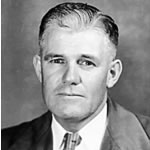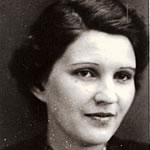SNOW WINS SCHOLARSHIP. The Lilburn Woman’s Club announces the winner of The Ripple Effect scholarship. The winner is Miss Melanie Snow, a fourth grader at Knight Elementary school. She wins a $50 scholarship and certificate for her idea of developing a compass rose in the school’s teaching garden. Toni Ferguson, left, the principal, and Melanie’s mother, Amy Snow, saw Melanie receive The Ripple Effect Certificate of Achievement presented, by Judy Nash and Jane Heyer of The Lilburn Woman’s Club. This scholarship awards $50 to any student in Lilburn schools, whose proposal is accepted, toward developing an idea that will greatly impact our local community. Melanie wrote, “I think that the compass rose would help other students learn direction. And it would help (them) to learn about explorers. The goal of the Lilburn Woman’s Club’s scholarship is to encourage local young people to think of positive ways to impact our community resulting in the development of the community.
IN THIS EDITIONTODAY’S FOCUS: Remembering Blanche and Troy Thomason of Snellville
EEB PERSPECTIVE: Hudgens Art Center To Announce New Director
ANOTHER VIEW: Something Must Be Done To Reform U.S. Senate
UPCOMING: ARC Seeking Input to Comprehensive Regional Plan
NOTABLE: Here Are Tips for Your Pets from SPCA for the Holidays
RECOMMENDED READ: Shattered Consensus by James Piereson
GEORGIA TIDBIT: Many of Melissa Fay Greene’s Books Focus on Georgia
TODAY’S QUOTE: Sit Still and Watch Your Troubles Go Away
MYSTERY PHOTO: Only One Person Recognized Recent Photograph
LAGNIAPPE: Fourth Grader Wins Lilburn Woman’s Club Scholarship
TODAY’S FOCUSSnellville residents were teachers and breeders of thoroughbred cattle
(Editor’s Note: This article is excerpted from the quarterly newsletter of the Snellville Historical Society, and used with permission. –eeb)
By James W. Cofer, president, Snellville Historical Society
SNELLVILLE, Ga., Dec. 18, 2015 — This is the story of two local residents who dedicated their lives to educating Snellville’s children, maintained a second career of raising pigs, Holstein cows, and finally Black Angus beef cattle, and parlayed their success into franchising and artificial insemination of national championship Angus thoroughbreds.
It’s the story of Blanche and Troy Thomason, former Snellville residents.
“Mr. Troy” Thomason was born on July 20, 1913 in Cobb County, his father a farmer, and his mother a school teacher. At the age of 12, Troy moved to the Snellville area with his family and graduated from Snellville Consolidated School in 1932.
Troy followed a sister, who had gone to Berry College in Rome, Ga. After receiving his teaching certificate, Troy returned to Gwinnett to begin teaching at Centerville and later at Sugar Hill. Next Troy became principal at Suwanee for two years, and at Centerville as principal for a year. He earned his A.B. degree in education from Oglethorpe University in 1941 and his Master’s Degree from Oglethorpe in 1943. Troy also spent some time in the defense industry, working as an auditor for Bell Bomber in Marietta.
Troy met Blanche Norton, a Snellville girl, and they were married on July 10, 1936. Blanche’s mother was the sister of Troy’s future mentor and principal, W.C. (Bill) Britt.
The couple purchased a 70-acre tract east of downtown Snellville (under the big oak tree), purportedly for a price of $40 per acre.
Troy served under Bill Britt for the 1946/47 school year. He taught eighth grade and coached basketball during some of those years until 1956, at which time Principal Britt retired, and Troy became principal for all 12 grades until South Gwinnett High opened in 1957. Troy continued as principal of grades 1-8 until 1969, when the school divided into W.C. Britt Elementary and Snellville Middle School. He became principal of Britt Elementary and served until retirement in 1972.
Blanche was an achiever in her own right, teaching fourth grade for 38 years, and selected as ‘Teacher of the Year’ in 1971. She began teaching at age 19, even before she received a teaching certificate.
The Thomasons continued supplementing their teaching incomes by expanding to pigs and then cows, mostly Holsteins by the 1950s. Thomason transitioned to Black Angus beef cattle in the late 1950s. He often employed professional ‘dressers’ at state and national shows to parade the cattle around the ring and position them for best appearance. Troy never showed his own cattle.
From the outset, Troy chose to raise a few (typically 9-13) animals, those of the top bloodlines. One afternoon Troy asked Bill Britt: “I just sold one of my Angus bulls; how much would you guess I got for him?” Mr. Britt mulled: “About $800-1,000?” Troy slowly extended a check for $100,000 for that bull!
Later he would win distinction at state fairs in Missouri, Iowa, Nebraska, Kansas, Oklahoma and other national shows. The cattle producing western states certainly must have taken note of this school teacher from Snellville walking away with all of their top prizes.
One day in 1981 a helicopter carrying investors landed out in the Thomason pasture and negotiated with Troy to buy half interest in one of his most prized young bulls…..at a price of $250,000. They also bought the bull’s mother for an additional $50,000. Later that bull was then valued at $2 million.
Having demonstrated that he could raise championship bulls and heifers, Troy then parlayed his expertise into thoroughbred artificial insemination. Troy employed an advanced technique which amplified the effectiveness by a factor of 30 or more. He would artificially breed one of his championship females to a bull of equal heritage, but then ‘flush out’ and collect the large number of eggs after they had been fertilized. His vet would collect the eggs and insert them into larger brood cows (typically Holsteins) who would carry the embryo to full term, thereby producing a thoroughbred Angus calf from a non-Angus mother. The larger Holsteins produced larger calves, more milk, and had less delivery problems than the smaller Angus females.
“Mr. Troy” died at age 86 on February 22, 2000, and is buried at Eternal Hills Memorial Garden. Blanche followed in death on May 9, 2004.
EEB PERSPECTIVEHudgens Art Center selects Ife Williams as its new director
By Elliott Brack, editor and publisher
DEC. 18, 2015 — GwinnettForum has learned that the Hudgens Center for the Arts will name Ife Marie Williams as its new director. She previously was the interim director of the Department of Art and Culture in Fulton County.
 Ms. Williams was introduced to the board of directors of the Art Center on Thursday night. Reached by telephone, she tells the Forum she is looking forward to “doing what the Hudgens does well, reach out into the community, and expanding into new programs. The Hudgens wants to do what the community in Gwinnett wants it to do.” She also adds: “For years I have been coming to the Hudgens Center for the Arts as a patron, and now I am excited about being its director.”
Ms. Williams was introduced to the board of directors of the Art Center on Thursday night. Reached by telephone, she tells the Forum she is looking forward to “doing what the Hudgens does well, reach out into the community, and expanding into new programs. The Hudgens wants to do what the community in Gwinnett wants it to do.” She also adds: “For years I have been coming to the Hudgens Center for the Arts as a patron, and now I am excited about being its director.”
Bill McCargo, chairman of the board of the Hudgens Art Center, says: “We are most fortunate to have a lady with such deep experience that knows the art scene locally in Atlanta, and has aspired to keep ascending to be one of the top arts centers in the region. She has the skill sets to take us to the next level. Our goal is to be the top arts venue in the region, and she can help us do that. There were 45 candidates for the position and she was obviously the best candidate for the job.”
Ms. Williams, 42, has an impressive background in arts education. She is a cum laude graduate of the University of Michigan in fine arts (sculpture and metalsmithing), and holds a master of arts degree from Syracuse University’s College of Visual and Performing Arts in museum studies. She also has a certificate of Nonprofit organization and management from the Georgia Center for Nonprofits. She was born in Atlanta, lives presently in Midtown and plans to move to Duluth.
She brings a wide background of experience in the arts field to her new position. That includes consulting, grant writing and as a museum curator at the Viscaya Museum and Gardens and later as a consultant at the Diaspora Vibe Cultural Arts Incubator, both in Miami, Fla. She was also with the Henry Art Gallery at the University of Washington in Seattle as an assistant collections registrar.
She joined the Fulton County government in Atlanta in 2005, as first a public arts program coordinator, development specialist, and deputy director of arts and culture, with a specialty in acting, before becoming the interim director supervising a 70 person staff.
While in museum management, Ms. Williams has been recognized for several awards in the arts field. She was a Distinguished Fellow at Georgia’s Hambridge Center in 2014; employee of the quarter for the Fulton Arts council in 2008; a Paul Abrams Endowment project Sculptor-in-Residence in Miami, Fla.; and won a Syracuse University graduate fellowship.
* * * * *
Meanwhile, the Hudgens Arts Center also has a new development director, as of December 1. He is David Bell, who has lived in Berkeley Lake for 48 years.
Bell comes to the Center from the Technical Association of the Pulp and Paper Industry in Peachtree Corners, where he was head of corporate relations and marketing. Previously he was with the Georgia Tech Institute of Paper Science and Technology.
He is a native of Columbia, S.C., and holds two degrees from Georgia State, in marketing and printmaking. His hobbies include photography, papermaking and printmaking. Married to the former Janet Kohl of Atlanta, they have two children, ages 27 and 14.
ANOTHER VIEWSomething must be done to reform U.S. Senate, our worst branch
By George Wilson
DEC. 18, 2015 — The U.S. Senate is the least representative legislative and worst branch of a government body in the democratic world. An ever shrinking minority of voters has the power to obstruct policies favored by the majority of the American people.
![]() From the 18th century to the present, the ratio of large- to small-state populations has grown from 19-to-1 to 66-to-1. Today, half of the Senate can be elected by 15 percent of the American people—and the problem is only getting worse. Most of the population growth in the United States in the foreseeable future will be concentrated in a few populous states (chiefly California). By the middle of this century, as few as five percent of the population, or even one percent, may have majority power in the Senate.
From the 18th century to the present, the ratio of large- to small-state populations has grown from 19-to-1 to 66-to-1. Today, half of the Senate can be elected by 15 percent of the American people—and the problem is only getting worse. Most of the population growth in the United States in the foreseeable future will be concentrated in a few populous states (chiefly California). By the middle of this century, as few as five percent of the population, or even one percent, may have majority power in the Senate.
Most of the Founding Fathers hated the Senate, which they created to satisfy small states, like Rhode Island, which demanded equal representation in the new federal government. In “The Federalist No. 22,” Alexander Hamilton, criticizing the Senate by implication, identified equal representation of the states in the national government as one of the worst defects of the Articles of Confederation. Allotting representatives based on statehood rather than population, he wrote, “Contradicts the fundamental maxim of republican government, which requires that the sense of the majority should prevail.”
However, something can be done to reform the Senate, even though delegates to the Constitutional Convention of 1787 managed to booby-trap the Constitution to protect them. Article V states that the American people cannot amend the Constitution to get rid of equal suffrage for the states: “No State, without its Consent, shall be deprived of its equal suffrage in the Senate.” And Article IV, Section 3, provides that no state can “be formed by the Junction of two or more States, or parts of States, without the consent of the Legislatures of the States concerned as well as of the Congress.” So there is not one, but two, poison pill provisions.
Moreover the way to reform is in Article IV, Section 3, “New States may be admitted by the Congress into this Union; but no new State shall be formed or erected within the Jurisdiction of any other State; nor any State be formed by the Junction of two or more States, or Parts of States, without the Consent of the Legislatures of the States concerned as well as of the Congress.”
Finally, this means that new states could be formed within the jurisdictions of the existing mega states? We could create eight new states in California; five in Texas; four in New York and Florida; three in Pennsylvania, Illinois, and Ohio, two in Michigan and New Jersey without changing the Constitution.
IN THE SPOTLIGHTThe Piedmont Bank
The public spiritedness of our sponsors allows us to bring GwinnettForum.com to you at no cost to readers. The Piedmont Bank, which opened its doors on June 30, 2009, is a full-service bank, with four locations, with its home offices at 5100 Peachtree Parkway in Norcross; and other locations at 185 Gwinnett Drive in Lawrenceville; east of Interstate 85 near Suwanee at Old Peachtree and Brown Roads; and in Dunwoody at 1725 Mount Vernon Road. It has a capitalization of $51 million, and more than $425 million in assets now. The bank is making substantial business and personal loans. Its directors include Paul Donaldson, Robert D. Cheeley, John J. Howard, Monty G. Watson (who is chairman), Robert J. Ratliff and T. Michael Tennant, while James E. Stephenson is an advisory director. Deposits in The Piedmont Bank are insured by the FDIC.
of Interstate 85 near Suwanee at Old Peachtree and Brown Roads; and in Dunwoody at 1725 Mount Vernon Road. It has a capitalization of $51 million, and more than $425 million in assets now. The bank is making substantial business and personal loans. Its directors include Paul Donaldson, Robert D. Cheeley, John J. Howard, Monty G. Watson (who is chairman), Robert J. Ratliff and T. Michael Tennant, while James E. Stephenson is an advisory director. Deposits in The Piedmont Bank are insured by the FDIC.
- For more information, call 770-246-0011 or visit http://www.piedmontbankonline.com.
- For a list of other sponsors of this forum, go to: Our sponsors.
Send your letters
We encourage readers to submit feedback (or letters to the editor). Send your thoughts to the editor at elliott@brack.net. We will edit for length and clarity.
Make sure to include your name and the city where you live. Submission of a comment grants permission for us to reprint. Please keep your comments to 300 words or less. However, we will consider longer articles (no more than 500 words) for featuring in Today’s Issue as space allows.
- SEND FEEDBACK AND LETTERS: elliott@brack.net
ARC seeking feedback on comprehensive regional plan
The Atlanta Regional Commission (ARC) is seeking feedback on The Atlanta Region’s Plan, a 25-year blueprint that details the programs and investments needed to ensure the region’s success. The plan is available for review online at www.atlantaregionsplan.com. Comments are being accepted through January 15. The ARC board is expected to adopt The Atlanta Region’s Plan in early 2016, after public feedback is incorporated.
 ARC Board Chairman Kerry Armstrong of Duluth says: “This Plan charts a course for our region to remain a vibrant, dynamic metropolitan area, with a competitive economy and high quality of life. It’s the culmination of several years of hard work by ARC staff and board members, as well as our planning partners around the region.”
ARC Board Chairman Kerry Armstrong of Duluth says: “This Plan charts a course for our region to remain a vibrant, dynamic metropolitan area, with a competitive economy and high quality of life. It’s the culmination of several years of hard work by ARC staff and board members, as well as our planning partners around the region.”
The Atlanta Region’s Plan, developed with considerable public input, incorporates all of ARC’s planning areas – transportation, community development, water resources, aging & health services and workforce development. The plan is built on three pillars that define success for metro Atlanta: providing world-class infrastructure; fostering healthy, livable communities; and building a competitive economy.
The Atlanta Region’s Plan includes an $86.1 billion investment in the region’s transportation infrastructure, providing new choices for residents and keeping our economy competitive. Transportation expenditures through 2040 include:
- Construction of managed toll lanes (114 miles): $6.9 billion
- Major roadway and intersection improvements: $9.8 billion
- Potential transit expansion projects: $12 billion
- Transit operations and maintenance: $30.7 billion
- Road maintenance, operations and safety: $24.3 billion
- Bicycle/Pedestrian facilities: $1.9 billion
- Management of Demand on the network (promoting carpooling, telecommuting and other commute alternatives): $.5 billion
The plan was developed with considerable public input. ARC has had more than 22,500 interactions with metro Atlanta residents via online, phone and face-to-face meetings. The outreach included a concerted effort to reach Millennials.
The Atlanta Region’s Plan also highlights plans and programs from major community institutions such as the United Way of Metropolitan Atlanta, The Community Foundation for Greater Atlanta and the Metro Atlanta Chamber.
There are several ways to provide feedback on The Atlanta Region’s Plan, including taking a survey and submitting a comment. A public hearing and open house will take place on January 14.
City of Sugar Hill seeking interns for Events and Marketing team
The City of Sugar Hill is looking for new interns to join the Events and Marketing team. This internship will give students the chance to learn different aspects of planning and carrying out a community event. This opportunity will also help interns learn and develop great communication skills.
 In addition to attending and helping out with a City of Sugar Hill event, interns will be able to assist with the process of putting together the event. This process will include helping the Events and Marketing staff with their planning. Interns will have the chance to contribute their ideas for an event, and may even be able to plan their own. Current intern Amber Nicholson confirms this when she says: “Being an intern at Sugar Hill is awesome! It’s really nice to work with supervisors who support and mentor us.”
In addition to attending and helping out with a City of Sugar Hill event, interns will be able to assist with the process of putting together the event. This process will include helping the Events and Marketing staff with their planning. Interns will have the chance to contribute their ideas for an event, and may even be able to plan their own. Current intern Amber Nicholson confirms this when she says: “Being an intern at Sugar Hill is awesome! It’s really nice to work with supervisors who support and mentor us.”
Interns with also learn how to communicate with others during their City of Sugar Hill internship. Some examples may include learning how to write a press release or contact potential sponsors for an event. During events interns will interact with other members of the community, and will have the chance to learn communication skills in this environment as well. Communication skills learned through this internship will help prepare an intern for a career. The City is anticipating to bring on three to five new interns.
Snellville seeking volunteers to help with annual MLK parade
 Snellville Mayor Tom Witts is asking local residents to volunteer in an effort to make the January 18 Martin Luther King Jr. Day event a success. The new mayor called for residents to come together as a “United Snellville” to volunteer for the event, which features an annual parade through the city.
Snellville Mayor Tom Witts is asking local residents to volunteer in an effort to make the January 18 Martin Luther King Jr. Day event a success. The new mayor called for residents to come together as a “United Snellville” to volunteer for the event, which features an annual parade through the city.
Witts told those in attendance at the regular Council Meeting Monday that he hopes to increase attendance at the parade, which will take place with the help of New Jerusalem Baptist Church. He said he hopes to assemble a choir with members from all of the city’s churches, have a short program outside City Hall before the parade, and attract marching bands and entertainment at the post-parade meal at South Gwinnett High School. Residents can call Witts directly at 770-891-1612 to volunteer.
NOTABLESPCA guidelines to keep your pets safe around the holidays
Georgia Society for the Prevention of Cruelty to Animals has tips to keep your pets safe around food, decorations, and plants that are abundant around the holidays and year round. Major change in activity or surroundings is stressful to pets who like to smell and play with these new, potential hazards.
- Keep holiday favorite foods away from pets. What is delicious for you could be dangerous for them. Some of the ingredients in traditional holiday treats are the worst culprits. Chocolate of any kind is toxic for pets. And wrapping on candy or other foods can cause choking or an intestinal blockage.
- Nuts (almonds, moldy and non-moldy walnuts, pistachios, and macadamia nuts) can be toxic, causing seizures or neurological signs. Fat, cooked or uncooked, can be also toxic or fatal to pets.
- Other foods to avoid are onions, garlic, spices (especially nutmeg and sage), uncooked yeast dough, raisins, grapes, caffeine, raw foods (eggs, meat or fish,) and any form of alcohol.
- Make sure your pet doesn’t have access to table scraps and food you have put in the garbage (including foil, toothpicks, and skewers) following your big holiday meals. Many dogs love to raid the garbage can!
Decorations:
- Secure your tree so that a cat that likes to climb or a large dog with a happy, wagging tail won’t bring it down.
- Make sure that preservatives or other substances, such as aspirin or sugar, commonly added to water in the tree stand are not accessible to pet.
- Ribbons, wrapping paper, and fasteners – it is best to discard these quickly once all the gifts are unwrapped so that curious pets won’t be tempted to chew on them.
- Electrical cords provide opportunities for both dogs and cats to chew, with the potential for electric shock, so be sure to secure cords, use grounded 3-prong plugs, and keep cords out of reach.
Plants:
- Many plants are toxic to pets, or cause at least some level of gastrointestinal upset.
- A few that are commonly used during the holidays are mistletoe, poinsettia (the milky sap), holly (especially the berries), Christmas cactus, and lilies. Don’t let your pet eat the needles from the Christmas tree, since they can cause gastrointestinal irritation or even perforation.
- With more people coming and going, it is easy for pets to slip outside unnoticed. Make sure pets are micro-chipped and wear collars with current tags to make it easier to recover them if they get lost.
More info
- For more information, visit the Gwinnett shelter at: 1175 Buford Highway, Suite 109, in Suwanee. Telephone: 678-765-2726; or visit http://www.georgiaspca.org/.
Great place for a gift
 Still hunting for a singular Christmas gift for a special person? On Friday and Saturday, from 11 a.m. until 4 p.m., the Kudzu Art Zone Gallery and Art Center in Norcross will be open, a place you just might find a painting or other art that will enrich someone’s soul.
Still hunting for a singular Christmas gift for a special person? On Friday and Saturday, from 11 a.m. until 4 p.m., the Kudzu Art Zone Gallery and Art Center in Norcross will be open, a place you just might find a painting or other art that will enrich someone’s soul.
This scene at right, by Loretta Loconto, drew our attention recently. The Art Zone is located at 116 Carlyle Street in downtown Norcross.
RECOMMENDEDShattered Consensus
By James Piereson
 The United States has been shaped by three far-reaching political revolutions: Jefferson’s Revolution of 1800, the Civil War, and the New Deal. Each of these upheavals concluded with lasting institutional and cultural adjustments that set the stage for new phases of political and economic development. Are we on the verge of a new upheaval, a “fourth revolution” that will reshape U.S. politics for decades to come? There are signs to suggest that we are. While there is the occasional bias, Piereson does an excellent job of describing the old conservatism, plus the old liberalism and contrasting them with the neoconservatives and progressives of today. The educational value of from where we came and how we got to where we are now is inestimable. That alone should be required knowledge of all citizens. If we don’t know from whence we came, we run the risk of repeating history….the bad as well as the good.
The United States has been shaped by three far-reaching political revolutions: Jefferson’s Revolution of 1800, the Civil War, and the New Deal. Each of these upheavals concluded with lasting institutional and cultural adjustments that set the stage for new phases of political and economic development. Are we on the verge of a new upheaval, a “fourth revolution” that will reshape U.S. politics for decades to come? There are signs to suggest that we are. While there is the occasional bias, Piereson does an excellent job of describing the old conservatism, plus the old liberalism and contrasting them with the neoconservatives and progressives of today. The educational value of from where we came and how we got to where we are now is inestimable. That alone should be required knowledge of all citizens. If we don’t know from whence we came, we run the risk of repeating history….the bad as well as the good.
— Hoyt Tuggle, Lawrenceville
An invitation: what books, restaurants, movies or web sites have you enjoyed recently? Send us your recent selection, along with a short paragraph (100 words) as to why you liked this, plus what you plan to visit or read next. –eeb
GEORGIA ENCYCLOPEDIA TIDBITMany of Melissa Fay Greene’s books focus on aspects of Georgia
(Continued from previous edition)
Melissa Fay Greene‘s second book, The Temple Bombing (1996).] focuses on Jacob Rothschild, rabbi of the Hebrew Benevolent Congregation in Atlanta, whose temple was bombed by still-unidentified individuals in October 1958; a group of white racists whom many thought responsible for the bombing, though they were ultimately acquitted of the crime; and the lawyers who both defended and tried to prosecute them, the flamboyant Reuben Garland among them. Greene treats this bombing as a symbolic moment in the history of Atlanta: until the bombing, “the City Too Busy to Hate” had avoided much of the strife experienced by other southern cities during the backlash against court-ordered integration that shook the region in the 1950s and 1960s.
Last Man Out: The Story of the Springhill Mine Disaster (2003) at first seems to depart from Greene’s earlier interest in Georgia’s social history. The book narrates the Nova Scotia mine disaster that gripped the nation’s attention in 1958, in which dozens of men were given up for dead before nineteen were unexpectedly rescued after more than a week trapped underground.
Greene’s interest in the civil rights movement becomes evident in her attention to one of the miners, Maurice Ruddick, who is African American, and to Georgia governor Marvin Griffin, who as a publicity stunt invites the miners to vacation at a segregated Jekyll Island resort after their rescue, before discovering that one of them is black. The book thus manages to illuminate and examine the links between various aspects of twentieth-century culture: the coal miners of Nova Scotia, segregated Georgia in the 1950s, the civil rights movement, and the rise of the mass media in modern society.
In 2006 Greene published her fourth book, There Is No Me Without You. In yet another departure from her Georgia-based histories, the book offers a poignant portrait of Haregewoin Teferra, an Ethiopian widow who lost her daughter to AIDS and soon thereafter adopted a teenaged girl whose own parents had died of the disease. Greene herself has adopted two Ethiopian children.
- To access the Georgia Encyclopedia online, go to http://www.georgiaencyclopedia.org
Mystery photo has historic background
There’s a lot of history behind this photograph. Perhaps there’re enough clues in this mystery photo that you’ll figure it out. Enough said! Send your answers to elliott@brack.net and be sure to include the town where you live.
 Only Karen Burnette Garner of Dacula was able to identify the most recent Mystery Photo. She writes that it was “The Old Bridge in Old City of Mostar, in the Neretva River valley, Bosnia-Herzegovenia.” Then she added: “The historic town of Mostar, spanning a deep valley of the Neretva River, developed in the 15th and 16th centuries as an Ottoman frontier town and during the Austro-Hungarian period in the 19th and 20th centuries.
Only Karen Burnette Garner of Dacula was able to identify the most recent Mystery Photo. She writes that it was “The Old Bridge in Old City of Mostar, in the Neretva River valley, Bosnia-Herzegovenia.” Then she added: “The historic town of Mostar, spanning a deep valley of the Neretva River, developed in the 15th and 16th centuries as an Ottoman frontier town and during the Austro-Hungarian period in the 19th and 20th centuries.
“Mostar has long been known for its old Turkish houses and Old Bridge, Stari Most, after which it is named. In the 1990s conflict, however, most of the historic town and the Old Bridge, designed by the renowned architect Sinan, was destroyed. The Old Bridge was recently rebuilt and many of the edifices in the Old Town have been restored or rebuilt with the contribution of an international scientific committee established by UNESCO. The Old Bridge area, with its pre-Ottoman, eastern Ottoman, Mediterranean and western European architectural features, is an outstanding example of a multicultural urban settlement. The reconstructed Old Bridge and Old City of Mostar is a symbol of reconciliation, international co-operation and of the coexistence of diverse cultural, ethnic and religious communities.”
The photo was sent in by Ross Lenhart of Pawley’s Island, S.C., who added himself: “For around 10 Euros, the guy sitting on the rail at the very top will jump into the river. He collects from the tourists on the bridge.”
CREDITSGwinnettForum is provided to you at no charge every Tuesday and Friday. If you would like to serve as an underwriter, click here to learn more.
- Send your thoughts, 55-word short stories, pet peeves or comments on any issue to Gwinnett Forum for future publication.
- MORE: Contact Editor and Publisher Elliott Brack at: elliott@gwinnettforum.com


















Follow Us